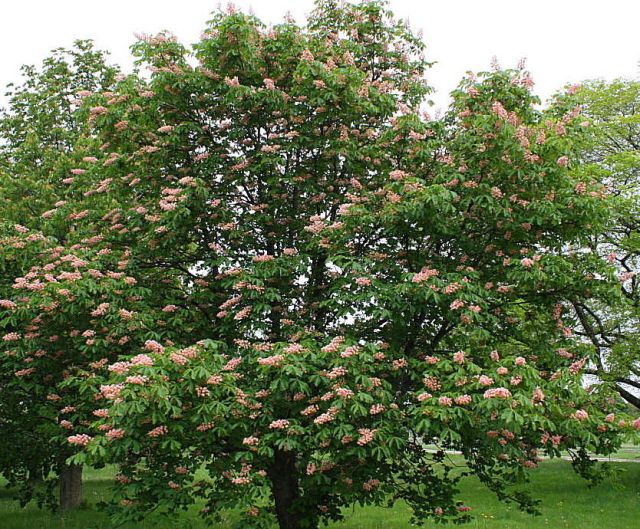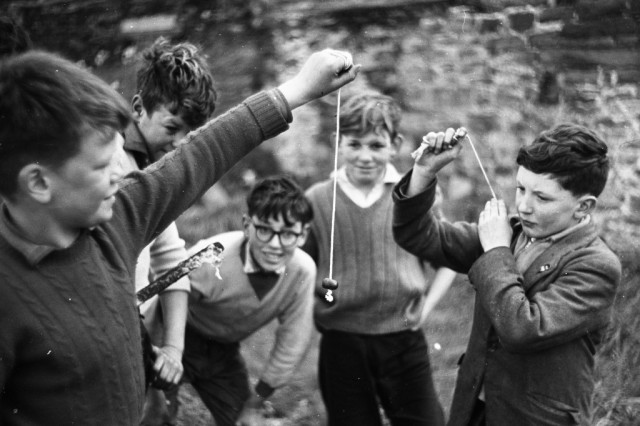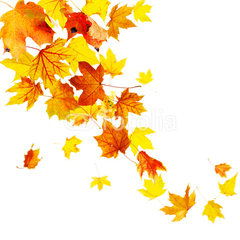I am standing in my kitchen with my little son. He asks me what’s all that noise outside. I tell him the neighbour’s tree is being cut down because it’s not feeling well. Why is it not well? He asks. I tell him that a tiny, invisible naughty mushroom has flown over rooftops and gardens from another sick tree and infected this one, making it unwell too, in the same way that he picks up colds and coughs from other children at nursery. But, he replies, if we get better, why does the tree have to be cut down? Well, I lament, sadly, these invisible flying mushrooms are so powerful that the tree will never recover from the sickness they bring. So, it’s better to let it go now, rather than watch it suffer any longer. Poor tree, my son muses. We continue watching in silence, as the bizzy whizzy blade of a chain saw bites into more branches. They tear and fall, leaving the sky empty.

I always admired the majestic pink horse chestnut (Aesculus x carnea) in my neighbour’s garden, as it provided a touch of nature and wilderness to an otherwise urban horizon. It was a haven for many species of birds and insects, its canopy broke the straight lines of the buildings behind, its spring blooms brightened up an otherwise monotone backdrop of magnolia painted walls. It was life. Large and bold.

Horse chestnut seeds arrived on British shores from their native land of Turkey around 450 years ago. The trees can grow up to 50m tall and live for up to 300 years. Bees and other insects love to feed off their nectar, deer munch on their seeds, and generations of children revel in the conker season.*

Taken from shootingpeople.org
Tradition has it, that on finding your first conker of the season, you should say “Oddly oddly onker my first conker”. This ensures prosperity and ‘few tangles throughout the coming season’. I rather like the sound of that. We’ll just have to nip to the park to find conkers next autumn.

Sadly, the loss of one tree is only a tiny example of the wider problem that horse chestnut trees (Aesculus hippocastanum) are facing. What was once a backdrop of our urban and rural landscapes, is now slowly dying off to two major diseases.
The deathly march of the leaf-mining moth (Cameraria ohridella), first noticed in Wimbledon Common in 2002, has already spread across most of England. The moths lay their eggs in the horse chestnut leaves, and the growing larvae then feed inside the leaves, drying them and turning them blotchy brown, making it seem like it’s autumn, in summertime.
The disease which blighted my neighbour’s tree is bleeding canker (Pseudomonas syringae pv. aesculi). Spores of bacterial fungi spread from one tree to another, entering into a wound and inhibiting the flow of phloem (sugars) in the trunk, to a gradual death.
First spotted in the 1970s, The Forestry Commission believes that half of the UK’s horse chestnuts are now suffering from the disease, and it may be spreading even more quickly now because of the Greek leaf-mining moth which weakens the tree, allowing for other nasty bacteria like bleeding canker to entrap the tree.
There doesn’t seem to be a clear reason as to why the tree oozes at the site of the infection. One theory is that the tree is protecting itself by clotting up the wound, preventing the fungus from entering any further. If the infection isn’t stopped, the gummy substance turns rusty brown then black, eventually killing the tree.
I hope the neighbours will plant another fine tree in its place, for future generations of children, birds and insects to enjoy. In the meantime, farewell, onker conker tree, go conquer heaven with your beauty.
……………………………………………………..
*Beware, although the tree is reported to have a host of medicinal properties, the seeds (conkers) have poisonous saponins and should never be confused with the delicious sweet chestnut, which comes from a completely different tree called the Castanea sativa.


















































